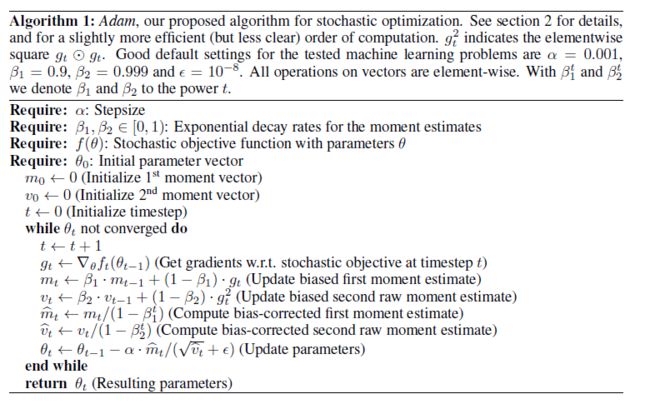- 国内高防加速CDN内容分发服务详细接入教程
网友阿贵
网站运维web安全安全性测试安全威胁分析
CDN功能与接入指南CDN(内容分发网络)是一种集安全防护和内容加速于一体的网络解决方案,适用于需要兼顾安全性和访问速度的业务场景。以下是其主要功能与接入步骤:核心功能:免费SSL证书:支持一键申请SSL证书,确保数据传输安全。Web攻击防护:集成WAF防火墙,防御SQL注入、XSS等常见攻击。CC攻击防御:智能识别并拦截恶意请求,保护网站稳定运行。BOT机器人分析:自动识别并管理机器人流量,优化
- 【Q&A】装饰模式在Qt中有哪些运用?
浅慕Antonio
Q&Aqt数据库服务器
在Qt框架中,装饰模式(DecoratorPattern)主要通过继承或组合的方式实现,常见于IO设备扩展和图形渲染增强场景。以下是Qt原生实现的装饰模式典型案例:一、QIODevice装饰体系(继承方式)场景为基础IO设备(如文件、缓冲区)添加数据格式解析、缓冲优化等功能。类图(Mermaid)«abstract»QIODevice+readData()+writeData()QFileQBuf
- 219.性能优化-内存优化-内存泄漏-本质原因:已经无用的对象未及时回收-非静态内部类
我也念过晚霞
性能优化
━━━━━━━━━━━━━━━━━━━━━━【第一部分:内存泄漏背景与“无用对象未及时回收”的根本原因】在Android开发中,内存资源十分有限,尤其是在手机、平板等设备上。内存泄漏就是指那些本应在不再被使用后被垃圾回收器回收,但由于某种原因任然被引用而无法释放的对象。随着内存中这些无用对象的不断累积,应用会产生以下问题:内存占用逐渐上升,导致应用响应变慢;系统频繁触发垃圾回收(GC),造成卡顿现
- LLMs之minimind:minimind源码解读(pretrain.py)——实现基于Transformer架构的大规模语言模型预训练及wandb监控—支持余弦退火学习率调度/分布式预训练/自动混
一个处女座的程序猿
NLP/LLMsCaseCodetransformerminimind预训练
LLMs之minimind:minimind源码解读(pretrain.py)——实现基于Transformer架构的大规模语言模型预训练及wandb监控—支持余弦退火学习率调度/分布式预训练/自动混合精度优化/梯度累积/梯度裁剪/定期保存模型目录minimind源码解读(pretrain.py)——实现基于Transformer架构的大规模语言模型预训练及wandb监控—支持余弦退火学习率调度/
- Kafka 的消息压缩机制:优化存储与传输的利器
阿贾克斯的黎明
javalinqc#java
目录Kafka的消息压缩机制:优化存储与传输的利器一、消息压缩机制的重要意义1.减少存储成本2.提升网络传输效率二、Kafka常用的消息压缩算法1.GZIP压缩2.Snappy压缩3.前端展示压缩状态(Vue3+TS)在消息中间件的大家族中,Kafka以其卓越的性能而备受瞩目。其中,Kafka的消息压缩机制是一项非常重要的特性,它就像是一个高效的“压缩包”,在不损失数据内容的前提下,有效减少数据的
- 关于AI OS那点事
大囚长
科普天地大模型人工智能
AIOS(人工智能操作系统)作为面向智能时代的操作系统,其功能定位和架构设计与传统操作系统(如Linux、Windows、iOS等)存在显著差异。一、AIOS需具备的核心功能智能体全生命周期管理智能体调度与并发:需支持多智能体任务的优先级排序、资源分配及并发执行,例如通过轮询调度或动态优先级算法优化LLM资源利用率。上下文感知与切换:通过上下文管理器实现智能体交互状态的快照保存与恢复,解决LLM生
- WPF从初学者到专家:实战项目经验分享与总结
xcLeigh
WPF从入门到精通wpfC#
WPF从初学者到专家:实战项目经验分享与总结一、前言二、WPF基础概念与入门2.1什么是WPF2.2XAML基础2.3数据绑定基础三、第一个WPF项目:简单的待办事项列表3.1项目需求分析3.2项目搭建与界面设计3.3业务逻辑实现四、中级项目:音乐播放器应用4.1项目需求分析4.2界面设计与布局4.3多媒体功能实现五、高级项目:企业级办公自动化平台(回顾与进阶)5.1项目回顾与优化5.2引入MVV
- 强化学习 Reward
百态老人
算法
在强化学习中,奖励(Reward)是智能体(Agent)与环境(Environment)交互过程中获得的重要反馈信号。奖励机制在强化学习中扮演着至关重要的角色,因为它不仅指导智能体如何在环境中行动,还影响其策略的优化和最终的学习效果。奖励是智能体在执行某个动作后从环境中获得的即时反馈,用于评估该动作的好坏。这种反馈帮助智能体调整其行为策略,以期在未来获得更多的奖励。奖励可以是正数、负数或零,其或负
- 基于 Redis 的分布式锁实现与优化
Blossom.118
分布式系统与高性能计算领域redis分布式数据库python3.11算法数据结构推荐算法
在分布式系统中,锁机制是保障数据一致性和并发控制的关键技术之一。Redis作为一种高性能的内存数据库,常被用于实现分布式锁。本文将详细介绍基于Redis的分布式锁的实现原理、代码示例以及优化策略,帮助读者更好地理解和应用这一技术。一、分布式锁的概念与需求在单机系统中,锁的实现相对简单,可以通过操作系统的同步机制或编程语言提供的锁机制来完成。然而,在分布式系统中,多个进程或线程可能运行在不同的机器上
- 从原理到实践:Go 语言内存优化策略深度解析
叶间清风1998
服务器linux网络
目录一、引言二、Go语言内存管理基础原理2.1栈与堆内存分配2.2垃圾回收机制剖析三、内存优化策略与实践3.1合理使用指针传递3.2避免不必要的内存分配3.3优化切片与映射的使用3.4控制变量作用域3.5减少闭包导致的变量逃逸四、内存优化工具与性能分析4.1pprof工具的使用4.2其他性能分析辅助手段五、不同场景下的内存优化案例分析5.1高并发Web服务场景5.2大数据处理与分析场景六、总结与展
- HCIA-AI人工智能笔记3:数据预处理
噗老师
华为认证人工智能笔记wpf数据处理AI华为认证
统讲解数据预处理的核心技术体系,通过Python/Pandas与华为MindSpore双视角代码演示,结合特征工程优化实验,深入解析数据清洗、标准化、增强等关键环节。一、数据预处理技术全景图graphTDA[原始数据]-->B{数据清洗}B-->B1[缺失值处理]B-->B2[异常值检测]B-->B3[重复值删除]A-->C{特征工程}C-->C1[标准化/归一化]C-->C2[离散化分箱]C--
- 深入解析 Redis 实现分布式锁的最佳实践
煜bart
机器人redispython
前言在分布式系统中,多个进程或线程可能会同时访问同一个共享资源,这就可能导致数据不一致的问题。为了保证数据的一致性,我们通常需要使用分布式锁。Redis作为高性能的内存数据库,提供了一种简单高效的方式来实现分布式锁。本文将深入探讨如何使用Redis来实现分布式锁,并介绍一些优化技巧和最佳实践。---一、为什么需要分布式锁?在单机环境下,我们可以使用synchronized、Lock等方式来控制并发
- 浏览器渲染流程
前端岳大宝
前端核心知识总结前端javascript
以下是关于浏览器渲染流程的系统梳理,涵盖基础原理、关键阶段、性能优化及进阶知识,帮助我们深入理解现代浏览器如何将代码转换为用户可见的像素:一、核心渲染流程(CriticalRenderingPath)浏览器渲染流程分为六个核心阶段,决定页面首次加载和更新的性能:1.构建DOM(DocumentObjectModel)过程:解析HTML生成DOM树(逐步解析,遇到可能阻塞)。阻塞因素:未添加asyn
- ESP32 智能猫喂水开发日志(RICE/MoSCoW/Kano三种产品路线规划)
天瑜创客
猫喂水项目单片机c++c语言数据结构visualstudiocodeharmonyos
RICE/MoSCoW/Kano三种产品路线的差异分析一、核心定位与适用场景差异1.RICE模型-核心逻辑:通过量化指标(Reach接触量、Impact影响程度、Confidence信心指数、Effort投入精力)计算需求优先级,聚焦资源投入与收益最大化。-适用场景:适用于需要平衡开发成本与预期收益的项目,例如新产品功能迭代或市场推广策略优化。2.MoSCoW模型-核心逻辑:将需求分为四类——Mu
- 【软件架构系列:一文读懂数据流体系结构风格】
youngerwang
学习笔记软件系统架构系统架构架构风格数据流体系结构风格
文章目录一文读懂数据流体系结构风格一、数据流体系结构风格是什么?二、数据流体系结构风格的类型(一)批处理风格(二)连续数据流风格三、数据流体系结构风格的特点(一)数据驱动一切(二)模块化与可复用性强(三)易于并行处理四、数据流体系结构风格的优势(一)维护轻松(二)扩展容易(三)性能优化空间大五、数据流体系结构风格的局限性(一)复杂控制逻辑实现困难(二)数据一致性挑战(三)资源消耗问题六、数据流体系
- PyTorch基础知识讲解(一)完整训练流程示例
苏雨流丰
机器学习pytorch人工智能python机器学习深度学习
文章目录Tutorial1.数据处理2.网络模型定义3.损失函数、模型优化、模型训练、模型评价4.模型保存、模型加载、模型推理Tutorial大多数机器学习工作流程涉及处理数据、创建模型、优化模型参数和保存训练好的模型。本教程向你介绍一个用PyTorch实现的完整的ML工作流程,并提供链接来了解这些概念中的每一个。我们将使用FashionMNIST数据集来训练一个神经网络,预测输入图像是否属于以下
- Python连接StarRocks全流程实践: SQL文件调用与Pandas混合优化
ToreanonyTang
pythonsqlpandas数据库开发语言
文章目录一环境准备与连接方法1.安装核心依赖库2.连接字符串配置3.多模式连接验证二SQL文件调用与动态执行1.外部SQL文件结构设计2.Python动态加载执行三Pandas混合使用技巧1.查询结果直接转DataFrame2.批量数据写入优化四深度性能优化策略1.StarRocks服务端优化2.Python客户端优化3.混合计算策略五完整业务场景示例1:用户转化漏斗业务场景实现代码公用表表达式(
- 稳定运行的以Microsoft Azure Cosmos DB数据库为数据源和目标的ETL性能变差时提高性能方法和步骤
weixin_30777913
microsoftazure数据仓库etl性能优化
在以MicrosoftAzureCosmosDB数据库为数据源和目标的ETL(提取、转换、加载)过程中,性能变差时,可能有多种原因。提高以MicrosoftAzureCosmosDB为数据源和目标的ETL性能,通常涉及数据库配置、查询优化、并发执行、数据传输优化和使用CosmosDB特性等多个方面。通过以下方法和步骤,可以显著改善ETL性能:增加RU设置、优化分区策略;优化查询、使用批量操作;提高
- 【机会约束、鲁棒优化】机会约束和鲁棒优化研究优化【ccDCOPF】研究(Matlab代码实现)
科研_G.E.M.
matlab概率论开发语言
个人主页欢迎来到本博客❤️❤️博主优势:博客内容尽量做到思维缜密,逻辑清晰,为了方便读者。⛳️座右铭:行百里者,半于九十。本文目录如下:目录1概述机会约束、鲁棒优化与ccDCOPF研究综述1.机会约束规划(ChanceConstrainedProgramming,CCP)在电力系统中的应用2.鲁棒优化(RobustOptimization,RO)在电力系统中的应用3.机会约束与鲁棒优化的协同方法
- yolov8实战第七天——pyqt5-yolov8实现车牌识别系统(参考论文(约7000字)+环境配置+完整部署代码+代码使用说明+训练好的模型)
学术菜鸟小晨
yolov8实战100天pythonYOLOpyqt5车牌识别毕业设计论文
基于pyqt5-yolov8实现车牌识别系统,包括图片车牌识别,视频车牌识别,视频流车牌识别。效果展示(图片检测,检测到的内容添加到历史记录):效果展示(视频检测,视频车辆只会添加一条记录,下文更多实际应用中的优化策略):新增功能:批量图片检测(2024/5/7更新代码)
- 优化 Java 数据结构选择与使用,提升程序性能与可维护性
A-Kamen
java数据结构开发语言
引言在软件开发中,数据结构的选择是影响程序性能、内存使用以及代码可维护性的关键因素之一。Java作为一门广泛使用的编程语言,提供了丰富的内置数据结构,如数组、链表、栈、队列、树、图以及集合框架中的各种接口实现(如List,Set,Map等)。然而,面对不同的应用场景,如何合理地选择和优化数据结构,成为了一个值得深入探讨的话题。本文将介绍几种常见的Java数据结构,并探讨如何根据实际需求进行优化选择
- MySQL 性能优化方向
小赖同学啊
大数据mysql性能优化数据库
MySQL性能优化是一个系统性的工作,涉及数据库设计、查询优化、索引优化、硬件配置等多个方面。以下是MySQL性能优化的主要方向和具体优化方案:一、数据库设计优化1.合理设计表结构规范化设计:避免数据冗余,确保数据一致性。适度反规范化:在查询频繁的场景下,适当冗余数据以减少连表查询。选择合适的数据类型:使用最小的数据类型存储数据,例如用TINYINT代替INT,用VARCHAR代替TEXT。2.分
- TensorFlow和Pytorch在功能上的区别以及优势
Honeysea_70
#算法tensorflowpytorch人工智能
功能上的区别1.计算图TensorFlow:使用静态计算图(StaticGraph)。在运行模型之前,需要先构建完整的计算图,然后通过会话(Session)运行图。优点是性能优化更高效,适合大规模分布式训练和生产环境部署。缺点是调试相对复杂,因为计算图的构建和运行是分离的。PyTorch:使用动态计算图(DynamicGraph)。计算图是动态构建和执行的,每次迭代都会重新构建图。优点是调试方便,
- 无人机4G双链路技术分析!
云卓SKYDROID
无人机云卓科技科普遥控器高科技链路
一、技术要点1.双链路架构设计同时接入两个独立的4G网络(如不同运营商或频段),采用冗余或聚合模式。冗余模式下链路互为备份,聚合模式下带宽叠加。支持动态切换逻辑,根据信号质量、延迟等参数选择最优链路。2.多模通信模块与协议支持集成双SIM卡或eSIM,兼容多运营商网络,支持多频段(如LTE-FDD/TDD)。需适配通信协议(如TCP/IP优化、QoS保障),确保数据完整性。3.数据分流与聚合数据分
- AI时代个人财富增长实战指南:从零基础到精通变现的完整路径
A达峰绮
人工智能
(本文基于人工智能技术发展规律,结合互联网经济底层逻辑,为普通从业者构建系统性AI应用框架)一、建立AI认知基础:技术理解与工具掌握技术分类认知人工智能工具分为四大功能模块:自然语言处理(文本生成、对话交互)、计算机视觉(图像视频处理)、数据分析(预测建模)、自动化控制(流程优化)。建议新手首先掌握语言类工具的基础操作,逐步扩展到其他领域。工具操作逻辑通用AI工具通常包含三大核心功能模块:输入界面
- LabVIEW发电平台数据采集系统
LabVIEW开发
LabVIEW开发案例LabVIEW开发案例
本文详细介绍了基于LabVIEW的摇臂式波浪发电平台数据采集系统的设计与实现。通过整合LabVIEW软件与多种传感器技术,本系统能够有效提升数据采集的准确性和效率,为波浪能的利用和发电设备的优化提供科学依据。项目背景随着全球能源需求增长和环境保护意识的提升,波浪能作为一种清洁、可再生的能源被越来越多地关注。本项目旨在开发一套高效的波浪发电数据采集系统,以优化设备性能和提高能源转换效率,特别是在复杂
- CSS动画:性能优化指南
双囍菜菜
前端随记css性能优化前端
CSS动画性能优化指南关键词:重排重绘、硬件加速、合成层、性能分析文章目录CSS动画性能优化指南一、浏览器渲染机制:理解性能瓶颈根源1.1像素管道(PixelPipeline)全流程1.2各阶段性能损耗对比二、性能分析实战:ChromeDevTools深度使用2.1性能问题定位四步法2.2关键指标解读三、六大核心优化策略3.1硬件加速的正确打开方式3.2避免布局颠簸(LayoutThrashing
- 美团-测开
陈陈爱java
postman
【软件测试】白盒测试与黑盒测试_白盒测试和黑盒测试-CSDN博客软件测试理论与实践:涵盖数据库、网络、自动化测试-CSDN博客对测开的理解通过技术手段来测试和优化软件,测试功能是否能正常运行,存在哪些漏洞,提高系统的稳定性。而且思维要活跃,能够构建一些测试体系。分析产品需求,参考技术方案,指定合理高效的测试方案,编写清晰的测试用例发现、定位、跟踪产品缺陷,协同开发解决问题开发高效的自动化测试工具
- AR眼镜——软件技术栈的必经之路
Julian.zhou
人机交互未来思考人工智能ar人工智能交互空间计算语言模型
AR眼镜软件技术栈的必经之路:从操作系统到生态构建的深度解析摘要AR眼镜作为下一代人机交互入口,其软件技术栈的成熟度直接决定了用户体验与市场渗透率。本文基于行业最新技术动态与头部企业布局,深度剖析AR眼镜软件行业必须突破的七大技术方向,揭示从底层框架到应用生态的全栈技术储备路径。一、操作系统与底层框架:实时性与轻量化的双重革命AR眼镜软件生态的根基在于操作系统的定制化与优化,需满足三大核心需求:实
- 【颠覆性缓存架构】Caffeine双引擎缓存实战:CPU和内存双优化,命中率提升到92%,内存减少75%
Julian.zhou
架构相关Java开发基础技能算法缓存架构java
千万级QPS验证!Caffeine智能双缓存实现92%命中率,内存减少75%摘要:本文揭秘千万级流量场景下的缓存革命性方案!基于Caffeine打造智能双模式缓存系统,通过冷热数据分离存储与精准资源分配策略,实现CPU利用率降低60%、内存占用减少75%的惊人效果。文末附可复用的生产级代码!一、经典方案的致命陷阱:资源浪费之谜1.1真实事故现场案例回放:某电商大促期间,缓存集群CPU飙升至90%导
- 关于旗正规则引擎下载页面需要弹窗保存到本地目录的问题
何必如此
jsp超链接文件下载窗口
生成下载页面是需要选择“录入提交页面”,生成之后默认的下载页面<a>标签超链接为:<a href="<%=root_stimage%>stimage/image.jsp?filename=<%=strfile234%>&attachname=<%=java.net.URLEncoder.encode(file234filesourc
- 【Spark九十八】Standalone Cluster Mode下的资源调度源代码分析
bit1129
cluster
在分析源代码之前,首先对Standalone Cluster Mode的资源调度有一个基本的认识:
首先,运行一个Application需要Driver进程和一组Executor进程。在Standalone Cluster Mode下,Driver和Executor都是在Master的监护下给Worker发消息创建(Driver进程和Executor进程都需要分配内存和CPU,这就需要Maste
- linux上独立安装部署spark
daizj
linux安装spark1.4部署
下面讲一下linux上安装spark,以 Standalone Mode 安装
1)首先安装JDK
下载JDK:jdk-7u79-linux-x64.tar.gz ,版本是1.7以上都行,解压 tar -zxvf jdk-7u79-linux-x64.tar.gz
然后配置 ~/.bashrc&nb
- Java 字节码之解析一
周凡杨
java字节码javap
一: Java 字节代码的组织形式
类文件 {
OxCAFEBABE ,小版本号,大版本号,常量池大小,常量池数组,访问控制标记,当前类信息,父类信息,实现的接口个数,实现的接口信息数组,域个数,域信息数组,方法个数,方法信息数组,属性个数,属性信息数组
}
&nbs
- java各种小工具代码
g21121
java
1.数组转换成List
import java.util.Arrays;
Arrays.asList(Object[] obj); 2.判断一个String型是否有值
import org.springframework.util.StringUtils;
if (StringUtils.hasText(str)) 3.判断一个List是否有值
import org.spring
- 加快FineReport报表设计的几个心得体会
老A不折腾
finereport
一、从远程服务器大批量取数进行表样设计时,最好按“列顺序”取一个“空的SQL语句”,这样可提高设计速度。否则每次设计时模板均要从远程读取数据,速度相当慢!!
二、找一个富文本编辑软件(如NOTEPAD+)编辑SQL语句,这样会很好地检查语法。有时候带参数较多检查语法复杂时,结合FineReport中生成的日志,再找一个第三方数据库访问软件(如PL/SQL)进行数据检索,可以很快定位语法错误。
- mysql linux启动与停止
墙头上一根草
如何启动/停止/重启MySQL一、启动方式1、使用 service 启动:service mysqld start2、使用 mysqld 脚本启动:/etc/inint.d/mysqld start3、使用 safe_mysqld 启动:safe_mysqld&二、停止1、使用 service 启动:service mysqld stop2、使用 mysqld 脚本启动:/etc/inin
- Spring中事务管理浅谈
aijuans
spring事务管理
Spring中事务管理浅谈
By Tony Jiang@2012-1-20 Spring中对事务的声明式管理
拿一个XML举例
[html]
view plain
copy
print
?
<?xml version="1.0" encoding="UTF-8"?>&nb
- php中隐形字符65279(utf-8的BOM头)问题
alxw4616
php中隐形字符65279(utf-8的BOM头)问题
今天遇到一个问题. php输出JSON 前端在解析时发生问题:parsererror.
调试:
1.仔细对比字符串发现字符串拼写正确.怀疑是 非打印字符的问题.
2.逐一将字符串还原为unicode编码. 发现在字符串头的位置出现了一个 65279的非打印字符.
- 调用对象是否需要传递对象(初学者一定要注意这个问题)
百合不是茶
对象的传递与调用技巧
类和对象的简单的复习,在做项目的过程中有时候不知道怎样来调用类创建的对象,简单的几个类可以看清楚,一般在项目中创建十几个类往往就不知道怎么来看
为了以后能够看清楚,现在来回顾一下类和对象的创建,对象的调用和传递(前面写过一篇)
类和对象的基础概念:
JAVA中万事万物都是类 类有字段(属性),方法,嵌套类和嵌套接
- JDK1.5 AtomicLong实例
bijian1013
javathreadjava多线程AtomicLong
JDK1.5 AtomicLong实例
类 AtomicLong
可以用原子方式更新的 long 值。有关原子变量属性的描述,请参阅 java.util.concurrent.atomic 包规范。AtomicLong 可用在应用程序中(如以原子方式增加的序列号),并且不能用于替换 Long。但是,此类确实扩展了 Number,允许那些处理基于数字类的工具和实用工具进行统一访问。
- 自定义的RPC的Java实现
bijian1013
javarpc
网上看到纯java实现的RPC,很不错。
RPC的全名Remote Process Call,即远程过程调用。使用RPC,可以像使用本地的程序一样使用远程服务器上的程序。下面是一个简单的RPC 调用实例,从中可以看到RPC如何
- 【RPC框架Hessian一】Hessian RPC Hello World
bit1129
Hello world
什么是Hessian
The Hessian binary web service protocol makes web services usable without requiring a large framework, and without learning yet another alphabet soup of protocols. Because it is a binary p
- 【Spark九十五】Spark Shell操作Spark SQL
bit1129
shell
在Spark Shell上,通过创建HiveContext可以直接进行Hive操作
1. 操作Hive中已存在的表
[hadoop@hadoop bin]$ ./spark-shell
Spark assembly has been built with Hive, including Datanucleus jars on classpath
Welcom
- F5 往header加入客户端的ip
ronin47
when HTTP_RESPONSE {if {[HTTP::is_redirect]}{ HTTP::header replace Location [string map {:port/ /} [HTTP::header value Location]]HTTP::header replace Lo
- java-61-在数组中,数字减去它右边(注意是右边)的数字得到一个数对之差. 求所有数对之差的最大值。例如在数组{2, 4, 1, 16, 7, 5,
bylijinnan
java
思路来自:
http://zhedahht.blog.163.com/blog/static/2541117420116135376632/
写了个java版的
public class GreatestLeftRightDiff {
/**
* Q61.在数组中,数字减去它右边(注意是右边)的数字得到一个数对之差。
* 求所有数对之差的最大值。例如在数组
- mongoDB 索引
开窍的石头
mongoDB索引
在这一节中我们讲讲在mongo中如何创建索引
得到当前查询的索引信息
db.user.find(_id:12).explain();
cursor: basicCoursor 指的是没有索引
&
- [硬件和系统]迎峰度夏
comsci
系统
从这几天的气温来看,今年夏天的高温天气可能会维持在一个比较长的时间内
所以,从现在开始准备渡过炎热的夏天。。。。
每间房屋要有一个落地电风扇,一个空调(空调的功率和房间的面积有密切的关系)
坐的,躺的地方要有凉垫,床上要有凉席
电脑的机箱
- 基于ThinkPHP开发的公司官网
cuiyadll
行业系统
后端基于ThinkPHP,前端基于jQuery和BootstrapCo.MZ 企业系统
轻量级企业网站管理系统
运行环境:PHP5.3+, MySQL5.0
系统预览
系统下载:http://www.tecmz.com
预览地址:http://co.tecmz.com
各种设备自适应
响应式的网站设计能够对用户产生友好度,并且对于
- Transaction and redelivery in JMS (JMS的事务和失败消息重发机制)
darrenzhu
jms事务承认MQacknowledge
JMS Message Delivery Reliability and Acknowledgement Patterns
http://wso2.com/library/articles/2013/01/jms-message-delivery-reliability-acknowledgement-patterns/
Transaction and redelivery in
- Centos添加硬盘完全教程
dcj3sjt126com
linuxcentoshardware
Linux的硬盘识别:
sda 表示第1块SCSI硬盘
hda 表示第1块IDE硬盘
scd0 表示第1个USB光驱
一般使用“fdisk -l”命
- yii2 restful web服务路由
dcj3sjt126com
PHPyii2
路由
随着资源和控制器类准备,您可以使用URL如 http://localhost/index.php?r=user/create访问资源,类似于你可以用正常的Web应用程序做法。
在实践中,你通常要用美观的URL并采取有优势的HTTP动词。 例如,请求POST /users意味着访问user/create动作。 这可以很容易地通过配置urlManager应用程序组件来完成 如下所示
- MongoDB查询(4)——游标和分页[八]
eksliang
mongodbMongoDB游标MongoDB深分页
转载请出自出处:http://eksliang.iteye.com/blog/2177567 一、游标
数据库使用游标返回find的执行结果。客户端对游标的实现通常能够对最终结果进行有效控制,从shell中定义一个游标非常简单,就是将查询结果分配给一个变量(用var声明的变量就是局部变量),便创建了一个游标,如下所示:
> var
- Activity的四种启动模式和onNewIntent()
gundumw100
android
Android中Activity启动模式详解
在Android中每个界面都是一个Activity,切换界面操作其实是多个不同Activity之间的实例化操作。在Android中Activity的启动模式决定了Activity的启动运行方式。
Android总Activity的启动模式分为四种:
Activity启动模式设置:
<acti
- 攻城狮送女友的CSS3生日蛋糕
ini
htmlWebhtml5csscss3
在线预览:http://keleyi.com/keleyi/phtml/html5/29.htm
代码如下:
<!DOCTYPE html>
<html>
<head>
<meta charset="UTF-8">
<title>攻城狮送女友的CSS3生日蛋糕-柯乐义<
- 读源码学Servlet(1)GenericServlet 源码分析
jzinfo
tomcatWebservlet网络应用网络协议
Servlet API的核心就是javax.servlet.Servlet接口,所有的Servlet 类(抽象的或者自己写的)都必须实现这个接口。在Servlet接口中定义了5个方法,其中有3个方法是由Servlet 容器在Servlet的生命周期的不同阶段来调用的特定方法。
先看javax.servlet.servlet接口源码:
package
- JAVA进阶:VO(DTO)与PO(DAO)之间的转换
snoopy7713
javaVOHibernatepo
PO即 Persistence Object VO即 Value Object
VO和PO的主要区别在于: VO是独立的Java Object。 PO是由Hibernate纳入其实体容器(Entity Map)的对象,它代表了与数据库中某条记录对应的Hibernate实体,PO的变化在事务提交时将反应到实际数据库中。
实际上,这个VO被用作Data Transfer
- mongodb group by date 聚合查询日期 统计每天数据(信息量)
qiaolevip
每天进步一点点学习永无止境mongodb纵观千象
/* 1 */
{
"_id" : ObjectId("557ac1e2153c43c320393d9d"),
"msgType" : "text",
"sendTime" : ISODate("2015-06-12T11:26:26.000Z")
- java之18天 常用的类(一)
Luob.
MathDateSystemRuntimeRundom
System类
import java.util.Properties;
/**
* System:
* out:标准输出,默认是控制台
* in:标准输入,默认是键盘
*
* 描述系统的一些信息
* 获取系统的属性信息:Properties getProperties();
*
*
*
*/
public class Sy
- maven
wuai
maven
1、安装maven:解压缩、添加M2_HOME、添加环境变量path
2、创建maven_home文件夹,创建项目mvn_ch01,在其下面建立src、pom.xml,在src下面简历main、test、main下面建立java文件夹
3、编写类,在java文件夹下面依照类的包逐层创建文件夹,将此类放入最后一级文件夹
4、进入mvn_ch01
4.1、mvn compile ,执行后会在
